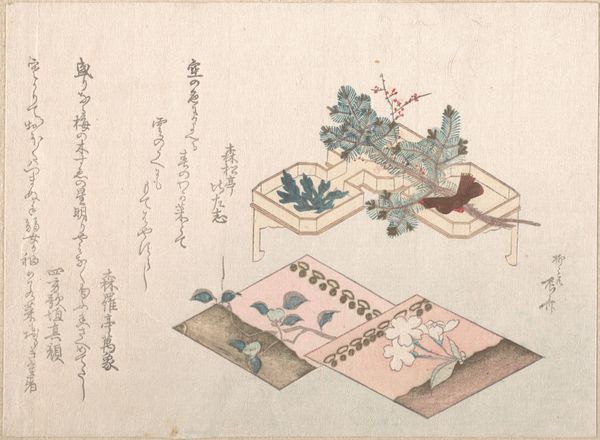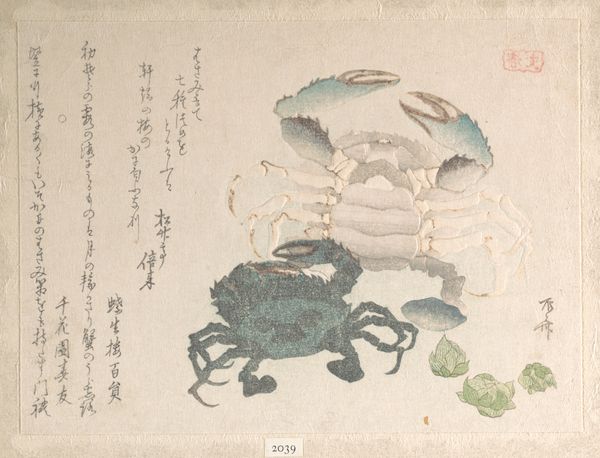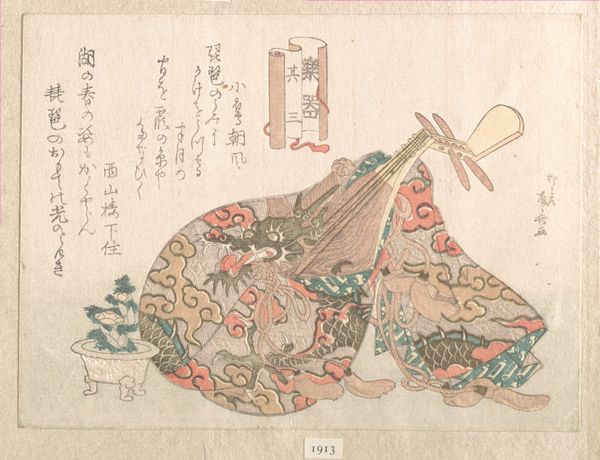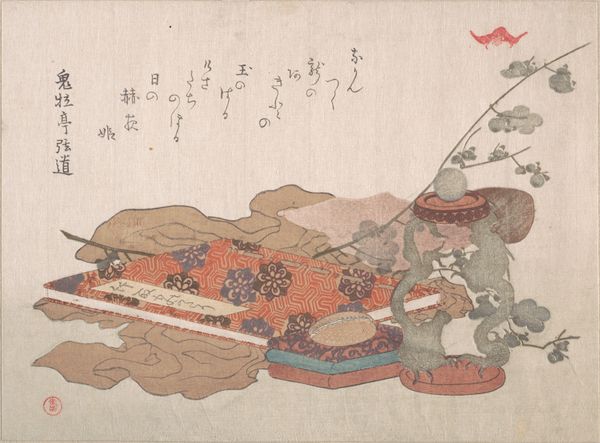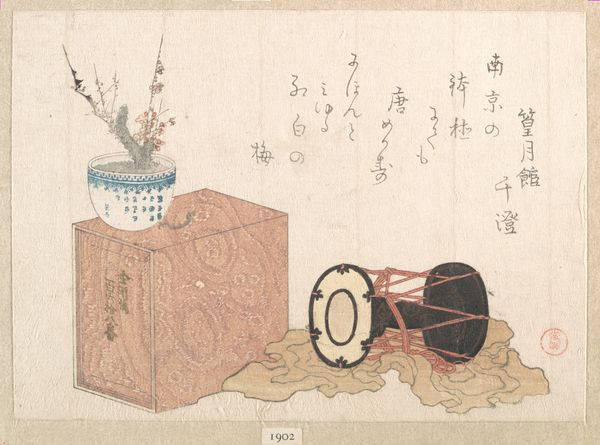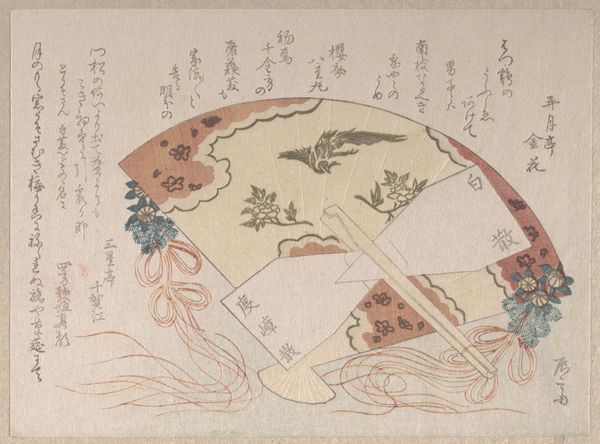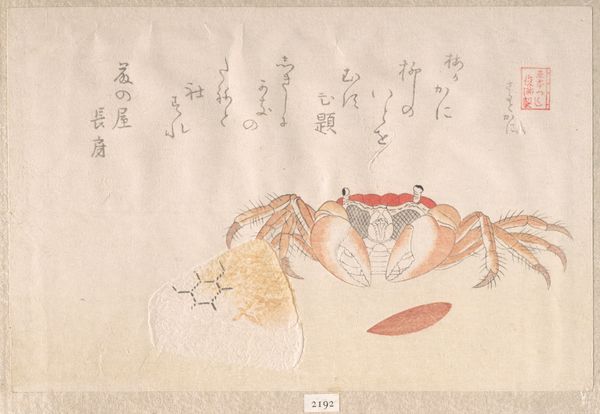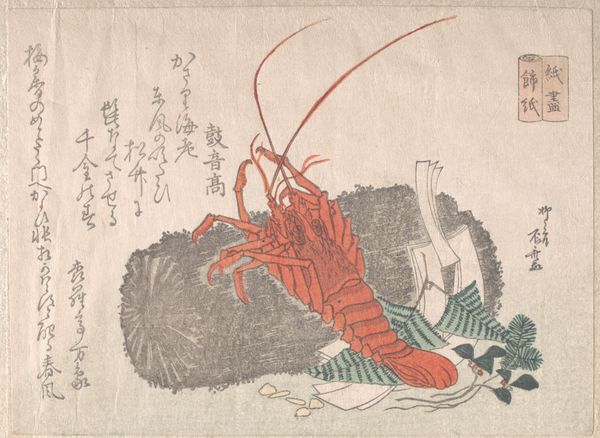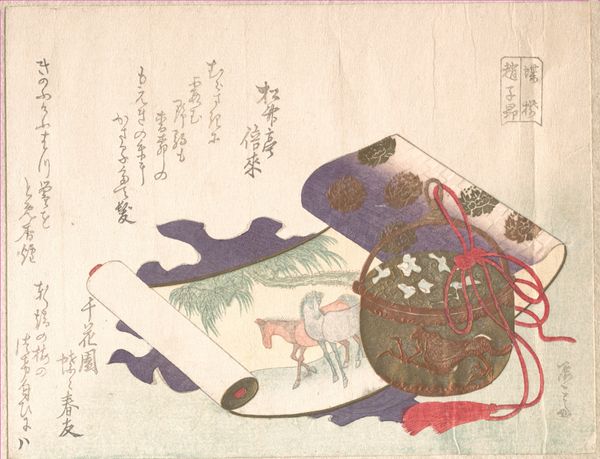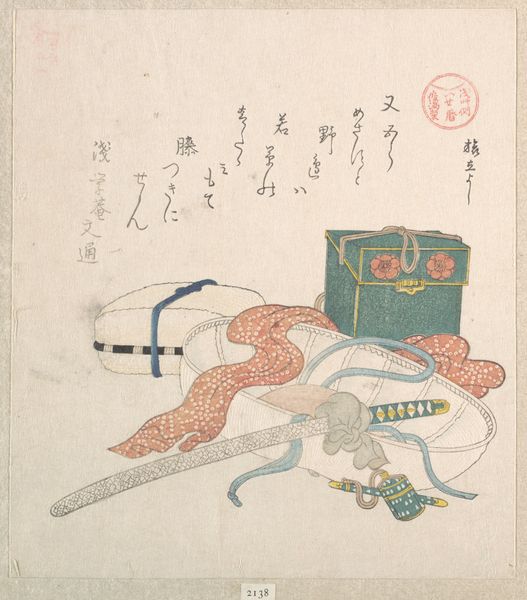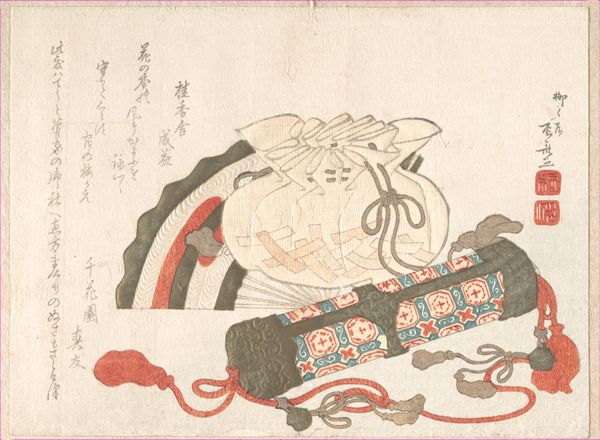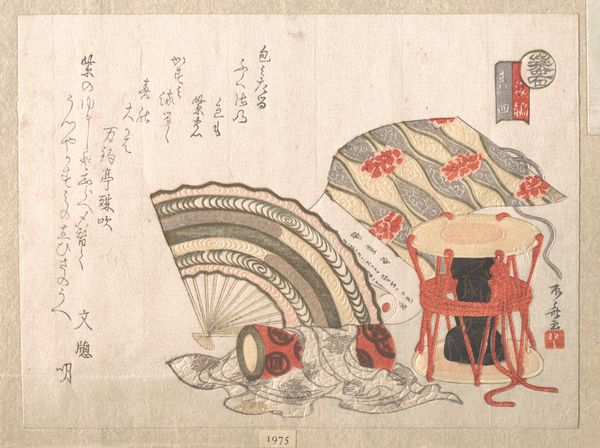
print, watercolor, woodblock-print
#
water colours
# print
#
asian-art
#
flower
#
ukiyo-e
#
watercolor
#
woodblock-print
Dimensions: 6 x 7 3/8 in. (15.2 x 18.7 cm)
Copyright: Public Domain
Editor: So, this woodblock print, "Decorations for the New Year," created between 1799 and 1823 by Ryūryūkyo Shinsai... it feels so delicate, almost dreamlike. There's a gentle quality to it, and those carefully arranged objects spark my curiosity. What do you see when you look at this piece? Curator: Ah, Shinsai! A delightful dance of line and form, isn’t it? For me, it whispers of ephemeral beauty, the fleeting nature of joy itself. Those carefully chosen objects aren't just decorations; they’re like tiny poems, each laden with symbolism. Do you recognize any recurring motifs or symbolic figures within? Editor: I can spot the pine, which probably symbolizes longevity, and the lobster... Maybe that's for good fortune? I feel there are layers to uncover. Curator: Precisely! The lobster represents long life and a wish for a bent back in old age, while the pine signifies steadfastness. It’s like a little stage set for prosperity. It makes you think, doesn't it, about what we choose to display, and the stories those choices tell? Do you feel drawn to any particular detail or object in the image? Editor: That's amazing. The arrangement of elements and symbols is really quite neat! But it makes me wonder – with all those decorations laid out almost for inspection – are these items placed indoors or perhaps readymade objects on display in a market? Curator: It’s wonderful how Shinsai straddles the boundary between intimate, domestic display and the more public presentation, it hints at both. We peer into the very customs of celebration, of bestowing hope and cheer onto the coming year, doesn’t it? Editor: It really does, I appreciate this explanation so much. The idea that objects become storytellers is so profound, really transforming my perception of art in everyday life. Curator: Precisely. Art isn’t just confined to grand canvases, it’s in the smallest gestures, the intentional placing of objects, the quiet hum of tradition passed down. Thank you for pointing it out! It seems I relearn this every day!
Comments
No comments
Be the first to comment and join the conversation on the ultimate creative platform.
